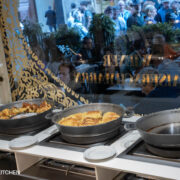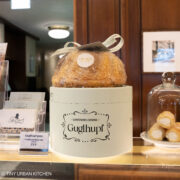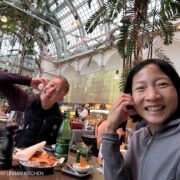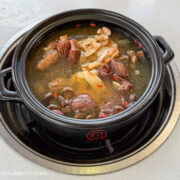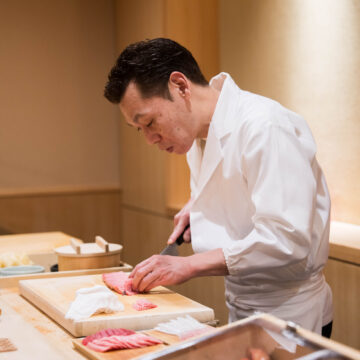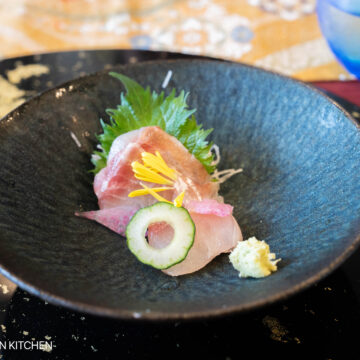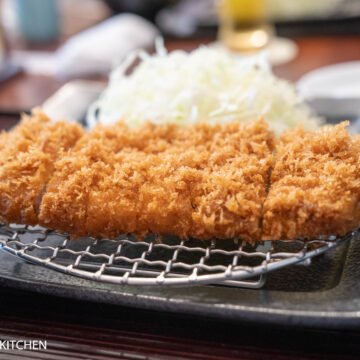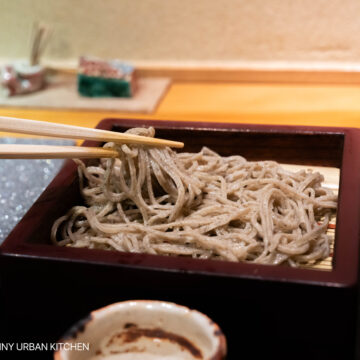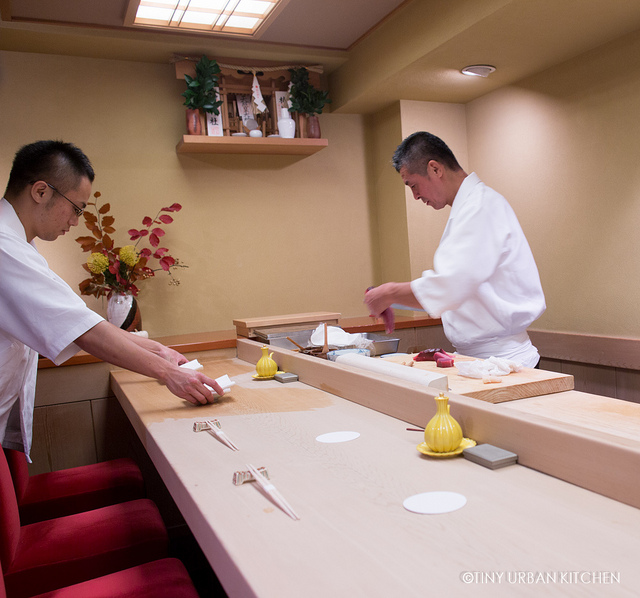
This is the sixth post in the series titled Tasting Tour of Tokyo detailing my recent trip to Japan. Other posts include Kikunoi Akasaka, Rokurinsha, Mikawa Zezankyo, Kaoriya, and Sushi Sawada.
Spending a week eating in Tokyo is more like a marathon than a sprint.
Usually many of the meals I enjoy are omakase in nature, which means they often have many, many courses. Near the beginning of the week I’m OK. However, by the end of the week, my stomach is crying uncle and I begin to feel like I cannot eat anymore.
It was near the end of our trip when I told Bryan, “I can’t do this anymore.” The idea of yet another omakase where a sushi chef would continue to hand me food, piece after piece after piece, terrified me.
I was all ready to just stop by a local ramen shop for a simple meal.
“But it’s our last night in Tokyo, a city known for its incredible sushi. We won’t get to eat sushi like this again for another year at least.”
Bryan wanted sushi. And I wanted control over what I ate.
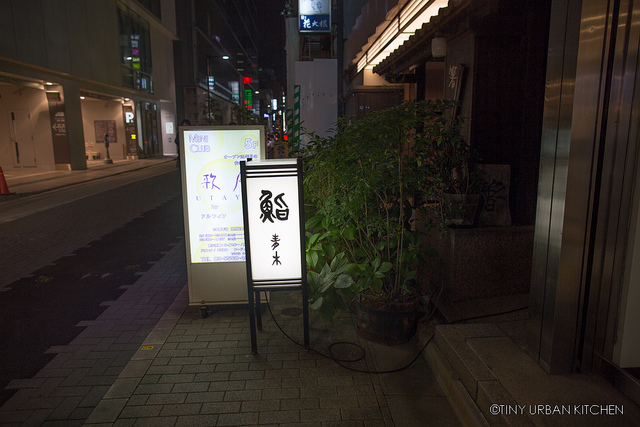
So I asked the concierge at our hotel. Although most high-end sushi places only serve omakase, there are a few exceptions that still serve excellent sushi. The most famous one is Kyubey, which we’ve visited several times in the past. Kyubey not only offers a really reasonable lunch for around 5000 yen, it also offers various types of lower priced set menus, as well as a la carte. Our concierge also recommended Sushi Aoki, a 1-star Michelin family-owned sushi restaurant that has expanded to three locations. Similarly, it offers lower priced set lunches (3000-4000 yen) as well as a la carte options.
Mostly because we’d already been to Kyubey several times, we opted to try Sushi Aoki. 
Clean and sparse, the ambiance of this location was similar to many other sushi places we had visited. Blond wood, bare walls, and serious sushi chefs focused on their craft in the middle of the sushi bar.
There was a bit of confusion at first as I tried to order a la carte for myself but omakase for Bryan. We got it clarified at the end, but in the beginning Bryan didn’t get the true omakase experience because the sushi chef was also giving him the a la carte stuff that I was ordering.
Oops! 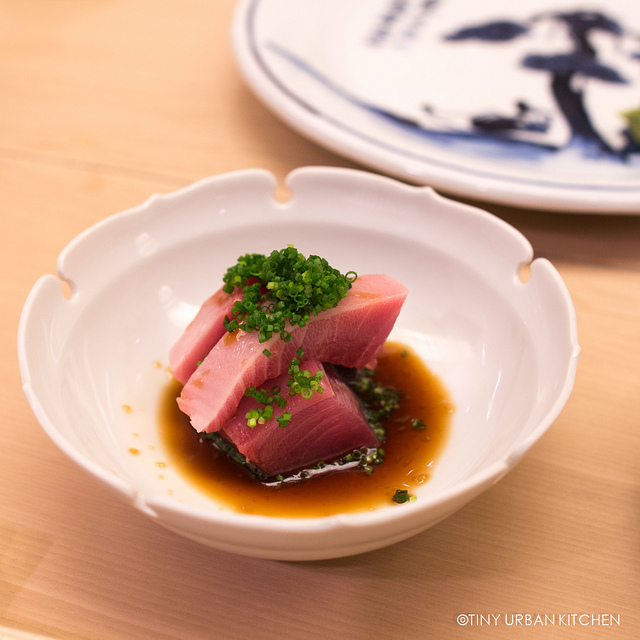
We began with a gorgeous starter of bonito sashimi with chives, which was fresh, flavorful, and a perfect way to begin the meal. I tasted hints of ginger, likely from the sauce in which the fish sat.
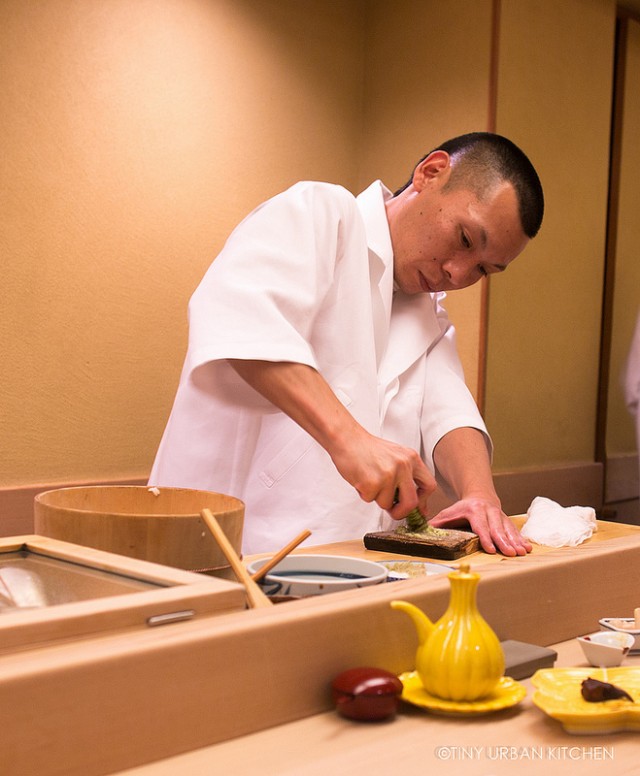
Off to the side, one of the chefs began grinding fresh wasabi from the stem. Fresh wasabi is less pungent compared to the "imitation" horseradish variety of wasabi that we get in the States. It has a deeper and more intense flavor, even though it has less "sting."
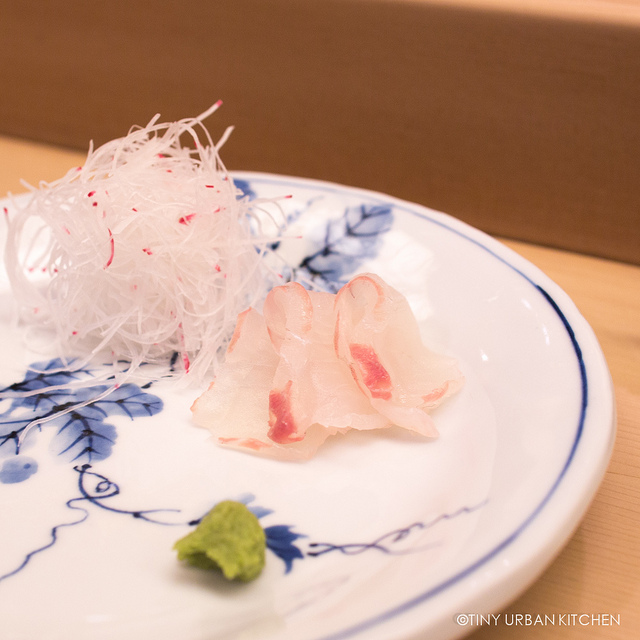
And then, sashimi began to appear, starting with three slices of the delicate white fish hirame (fluke).
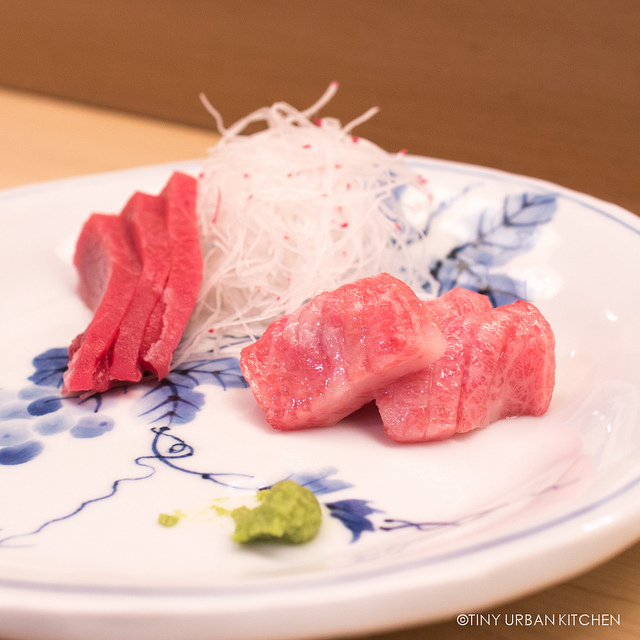
Next, we sampled various "grades" of tuna, from chutoro (medium fatty tuna) to otoro (fatty tuna). It was quite good, though I could easily tell that the quality and precision of these cuts were not quite up to par as the best sushi places in Tokyo (namely Mizutani and Jiro).
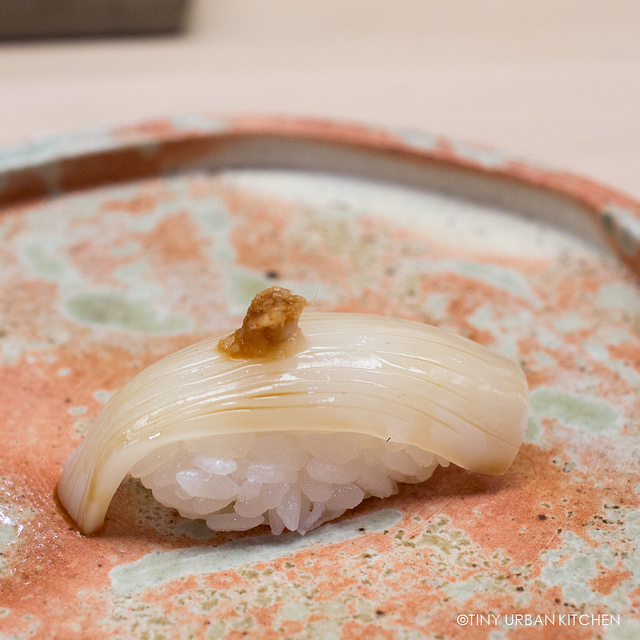
As part of my self-designed "a la carte" menu, I ordered ika (squid) because I was still dreaming about the luxuriously soft squid nigiri that I had enjoyed at Sukiyabashi Jiro earlier that week. Alas, even though this ika was still very fresh and tasty, the texture of it was much tougher, noticeably inferior to those served at Sukiyabashi Jiro or Sushi Sawada (places I had tried earlier that week).
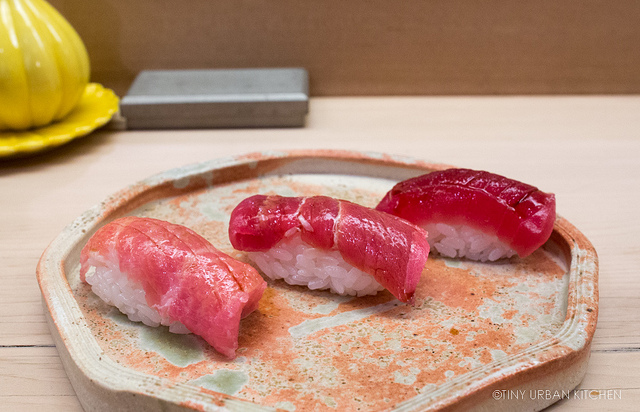
We had another tasting of tuna, this time in nigiri form. From left to right: otoro (super fatty tuna), chutoro (medium fatty tuna), and akami (tuna).
The Rest of Bryan's Omakase
At this point I was quite full and decided to stop, but Bryan wanted to keep on going. Here is the rest of Bryan's omakase.
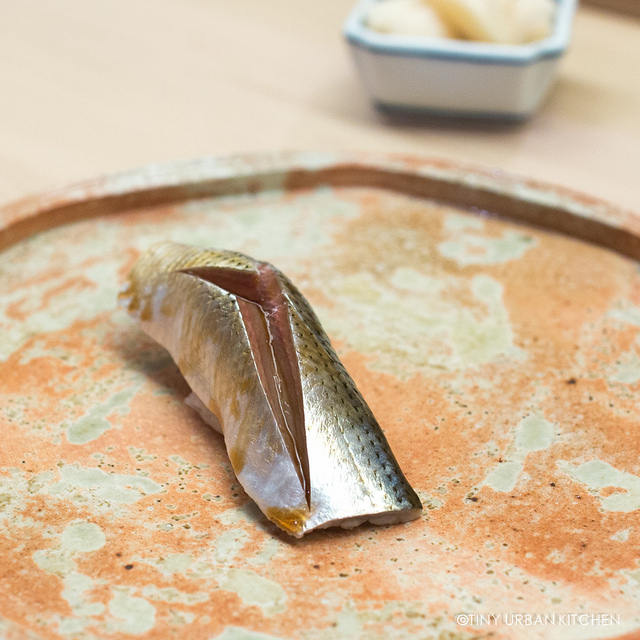
Kohada, or gizzard shad, is in the herring family and is a rich, fattier fish.
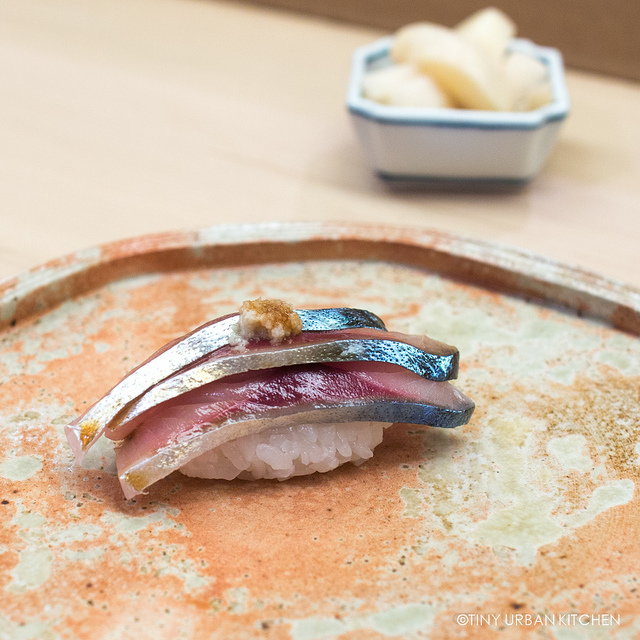
Saba, or mackerel, was softer than kohada and came as three slices on top of the rice.
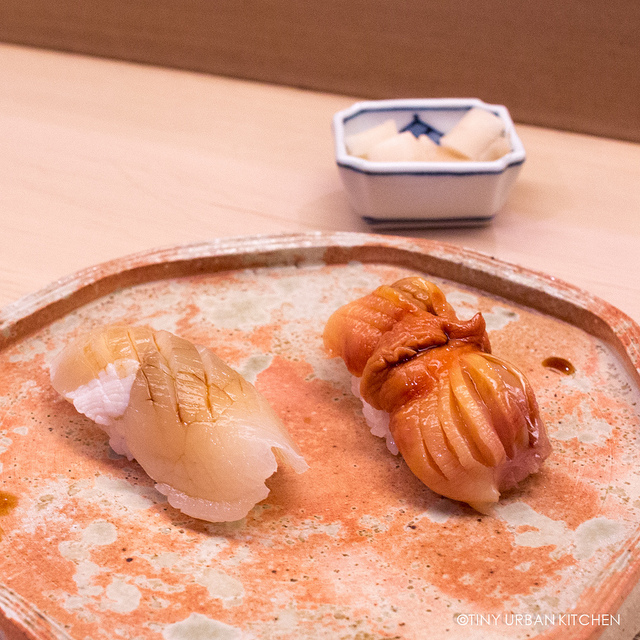
Next was Scallop and Akagai (Red Clam) which were both very good. The scallop was fresh and sweet and the red clam had that interesting, characteristic "bouncy"and almost crunchy texture which we both love.
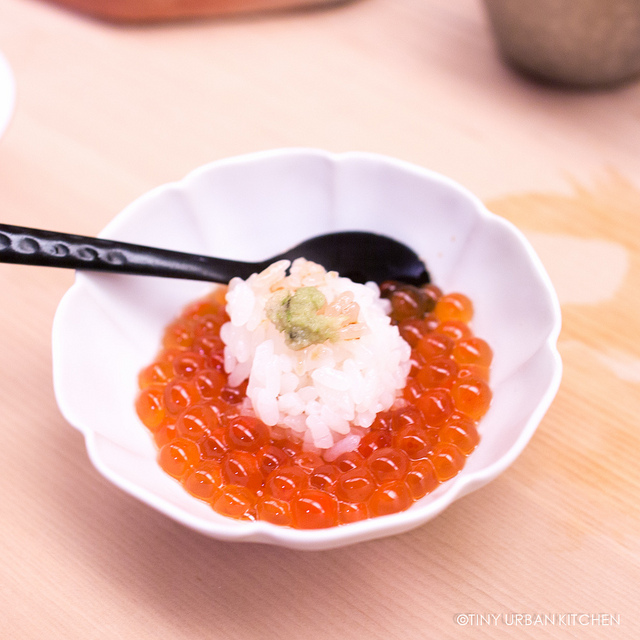
Ikura, or salmon roe, came served sort of as an "upside down" nigiri with the rice and wasabi on top of the eggs. You use the spoon to mix everything together, which tastes divine.
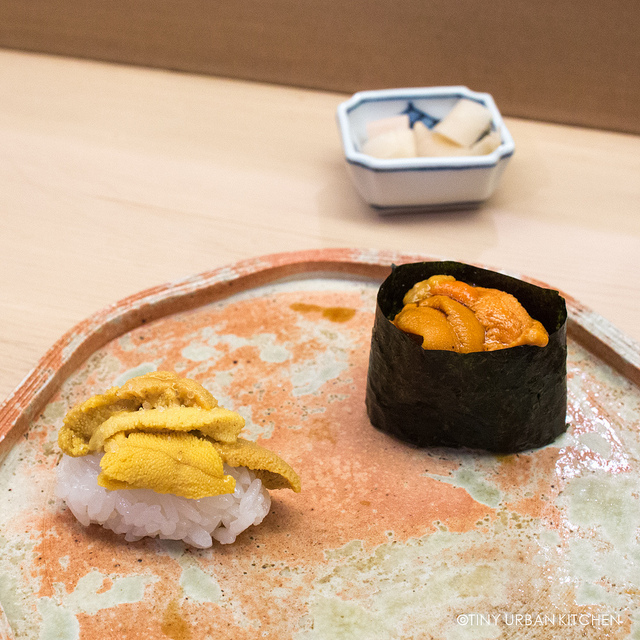
Out of all the sushi places we visited, Sushi Aoki was the only places to give us a sampling of uni from different regions. The lighter one pictured at left is from Kyushuu while the darker orange one on the right is from Hokkaido. Though both were delicious, Bryan preferred the Hokkaido one better, which was creamier.
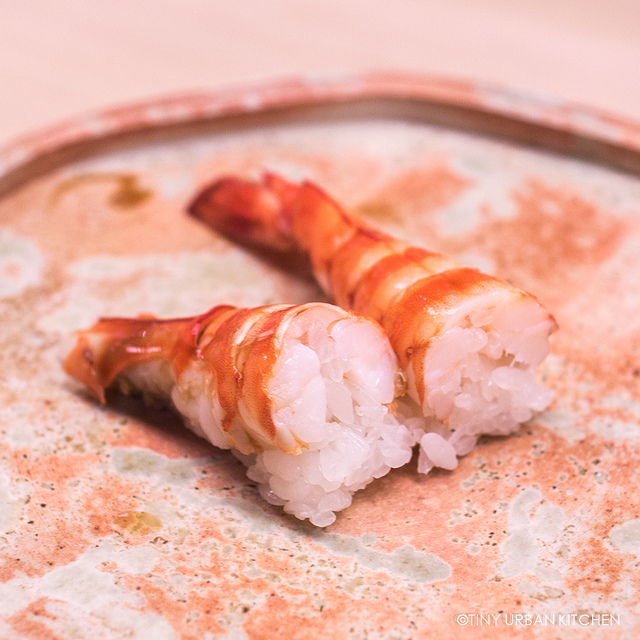
Ebi (or prawn), was juicy and sweet. Anago (saltwater eel) [not pictured] was super soft and tender.

Next was hamaguri (clam), which came brushed with just a tad of sauce on top.
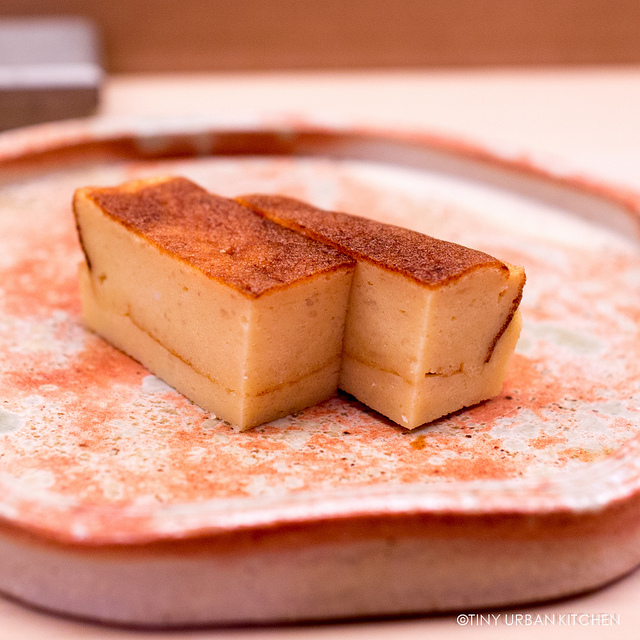
Finally we ended the meal with one of my favorite pieces, the tamago (egg omelet). This one was sweet and spongy with a lovely browned top. Perfect.
The Facts
In Tokyo, there are two locations of Sushi Aoki: the original one in Ginza and a newer one in Azabu-juban. There’s also a third one in London, interestingly enough. The one at Ginza was very hard to find! Signs are not written with English characters, so it's important to know the kanji (Chinese) characters. Even with our GPS-enabled phones, we still had trouble locating the entrance. We ended up searching for the restaurant's kanji characters on the web and comparing it with the sign shown below to confirm we were at the right place!
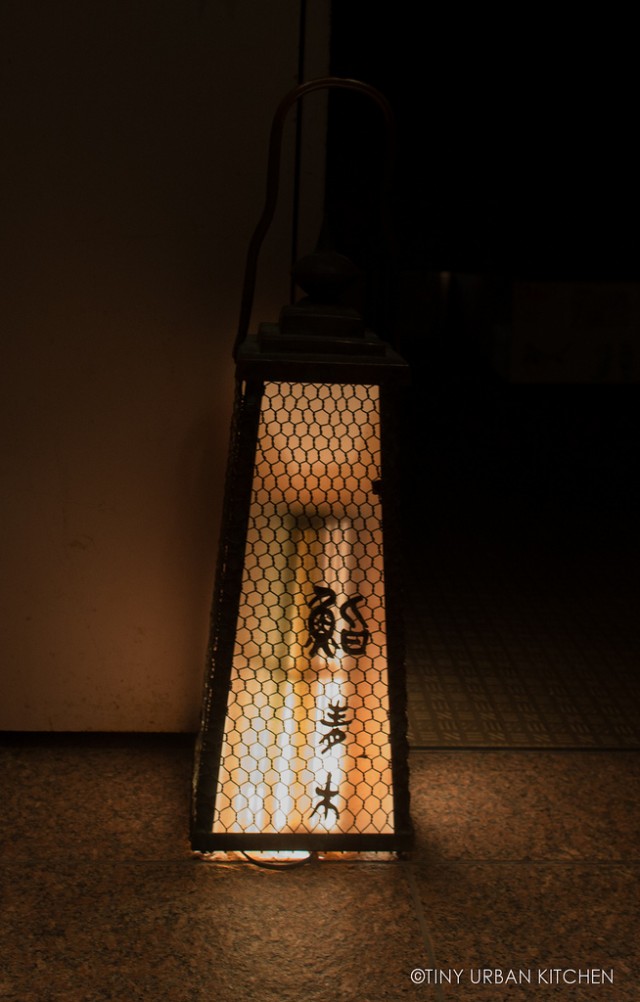
Sushi Aoki is open for lunch as well as dinner, and you can order either omakase or a la carte. It holds one Michelin star and often shows up on "Best sushi in Tokyo" lists. It's well known in Tokyo, and boasts quite a pedigree of "graduates", including the well revered Sawada-san. Everyone who works there is polite and pleasant, which makes a visit less intimidating for a foreigner (compared to Mizutani, who can be a bit distant, or Jiro, who stresses you out with the speed by which he doles out the sushi).
I was sort of biased when I visited Sushi Aoki because I had just tasted Sushi Sawada and Sukiyabashi Jiro right before, both arguably among the top 3-4 sushi restaurants in the world. Compared to those world class establishments, I definitely noticed some minor "misses" and differences in quality. I'm sure if I had visited any other time of the year, I would have raved much more highly about this place.
It's just that - Sawada and Jiro are pretty much impossible acts to follow.
So rest assured that this place is excellent and serves very high quality sushi. What I like best is that you can get excellent sushi in a very accessible location with friendly staff who are happy to let you choose your meal, if you so wish. No sushi nazis here.
Of course, if I'd had the stomach space, I would have still let them design the omakase. After all, chef seems to always knows best, and I confess that Bryan's meal seemed to have much better theme and flow compared to the haphazard toro-focused mish-mash that I created.
Live and learn.
Sushi Aoki, 2F Takahashi Building
6-7-4 Ginza, Chuo-ku, Tokyo
+ 81 3 3289 1044
©2009-2014 Tiny Urban Kitchen
All Rights Reserved








